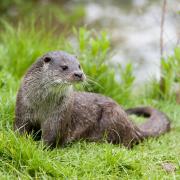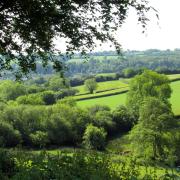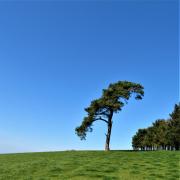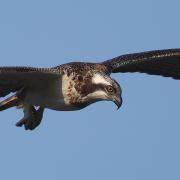A few months ago I looked at upland rivers, this month I look further downstream where a typical river broadens out and flows over much flatter ground. Its shallower gradient means a smoother surface to the water but don’t forget that still waters run deep. There is a lot of momentum in this water and we can see the effect of that wherever the river bends. See how on the outside of a bend the river is deep and has a strong current carving out a cliff and on the other side, where there is less force, a beach forms. Through these dynamics the river is continually trying to change its meandering path within its floodplain.

The vertical cliffs of alluvial soil provide a nesting opportunity for birds. Even where these banks are ephemeral in nature we find colonies of sand martins. These summer migrants arrive early in the year compared to swifts and swallows, digging out new nest burrows in March. They will have two, maybe three, broods a year before returning to Africa.

Kingfishers also nest in these small cliffs. This colourful bird is often heard before it is seen, we should listen for a high-pitched whistle from a bird flying low and fast over the river. They like to perch on branches overhanging the river. It isn’t just birds that utilise river cliffs, insects dig holes in sandy banks, especially where they are south-facing. We have several types of mining bee which after digging out a hole, fill it with pollen, lay an egg and block it off again. Inside their young hatch and develop to emerge next year.

On the opposite side of a bend where there is a beach there could be wagtails, both pied and grey wagtails are common in Devon. We might get lucky and see a wading bird such as a common sandpiper, particularly during times of migration.
All our rivers play host to otters, but they are mostly nocturnal, so it’s worth us getting up early to look for them. During the day we can look for their tracks and signs. Otter faeces, known as spraint, is usually dark with a fishy smell and is deposited on obvious rocks.

Rivers carry the seeds of wildflowers and deposit them on its banks, so any species that can cast its seeds effectively into the water will spread very effectively. The Himalayan balsam is one such plant, this non-native looks pretty and is loved by bees but it can take over, at the expense of other wildflowers, if left unchecked.
To see more of David’s photography visit his website davidchapman.org.uk



























